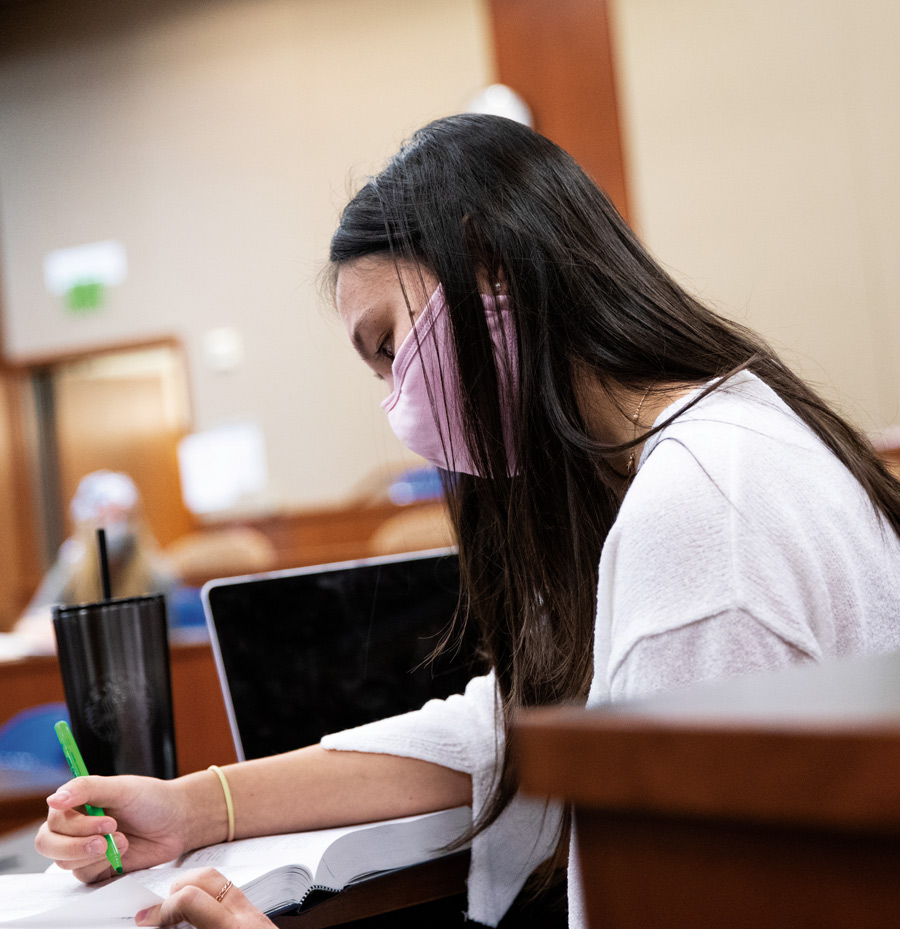

With high expectations, the Law School prepares for full in-person program in the Fall.
State of the Law School: ‘Flexible and Nimble’ During Pandemic
About sixty percent of students chose the in-person option. Ruger said he expects most JD students back on campus in the Fall as the Law School returns to near-normal operations.
“We don’t know exactly how Fall 2021 is going to look,” Ruger said in a State of the Law School presentation, acknowledging the uncertainties of the pandemic. “We certainly hope that it’s going to be better than Fall 2020 or Spring 2021.”
The Law School — which has had no in-building person COVID transmission — is certainly well-prepared for the return of most staff, students, and faculty given the resilience and adaptability on display during the past year of the pandemic, with Dean of Students Felicia Lin characterizing Law School leadership, students, and the faculty as “flexible and nimble.”

With high expectations, the Law School prepares for full in-person program in the Fall.
Law classes were offered in a hybrid format, with some students in the classroom and others joining via Zoom. The Law School expanded 1L sections from 3 to 6 — including one remote-only section — to accommodate regulations which placed a 25-person occupancy limit on classrooms.
In support of students, Lin said the Law School responded to the extraordinary level of need by doubling emergency expense funds for students who got sick or needed to go home due to family illness; awarding remote learning grants to students who needed technology upgrades; establishing designated hours for mental health counseling; and renting rooms at a nearby hotel and setting up a WIFI network so recent graduates could take bar exams in a remote location without complications.
Associate Dean for Curricular Affairs
Ruger touched on financial aid, saying the Law School is committed to increasing funding and lowering debt loads.
Noting Penn Law’s rise to sixth in the U.S. News & World Report rankings and the Law School’s continued No. 1 position in job placement, Ruger said there has been a 40 percent surge in applications, well above the national average. He attributed the increase in interest in law school, in part, to an idealistic generation driven to create a more equal justice system.
Ruger said the Fall class will be the strongest in Penn Law history based on LSAT scores and grades and will also be one of the most diverse, a point that both Lin and the Dean addressed. Lin said there has been a concerted Law School effort through the new Office of Equity and Inclusion to educate students about diversity. She said implicit bias training was mandatory for the 1L class and the subject was incorporated into orientation. “It (diversity awareness) is really core to everything we do,” Ruger said.
Even though the plan is to get back to normal, there remains an opportunity for strategic and creative use of remote learning gleaned from the lessons of the pandemic.
Ruger said he looked forward to the teaching of select seminars from foreign locations and perhaps the offering of specialized Zoom-based forums for alumni clubs and for attorneys who practice in specific areas of the law such as antitrust and public interest.
Ruger said the Law School has learned a great deal that it is “going to put into play in future years.”